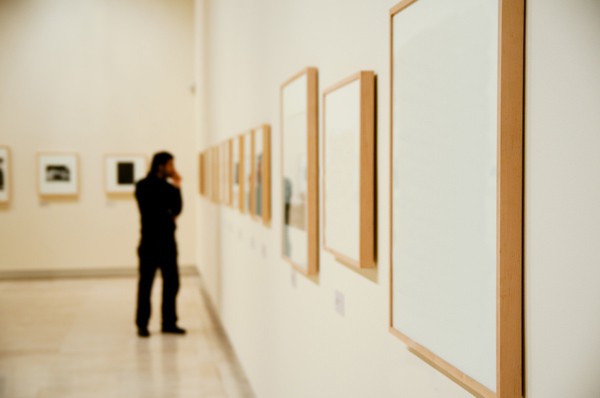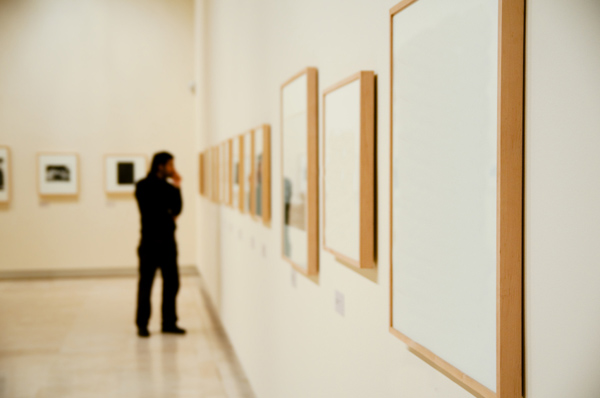Share
6 Tips to Ensure a Kickass Gallery Opening Night
Hey you – congrats! By now you’ve already put forth all the effort of researching and reaching out to galleries whose work is compatible with y...

Hey you – congrats! By now you’ve already put forth all the effort of researching and reaching out to galleries whose work is compatible with your own; you’ve sent a tight edit of your work, and drawn up the contract for an exhibition. Now the fun part of actually showing and selling your photography begins.
And while opening night should be a celebration, you also need be on your A-game. This is a big night, so we talked to several of the top galleries in NYC to get their advice. Included in the mix was: Jen Bekman Gallery, ClampArt, Finch & Ada, and United Photo Industries.
So straight from the gallerists themselves, here are 6 tips to ensure a totally kickass gallery opening night:
1. Work with the gallery to manage expectations
Ideally you’ve been picked up by a gallery whose brand and style matches your own. Now, if you haven’t done so already, it’s important to discuss your expectations with the gallerist before opening night. Examples of questions to ask: How many pieces do you typically sell on opening night? In the exhibition’s entire duration? Does the gallery usually attract first time art buyers or experienced collectors?
Jeffrey Teuton from Jen Bekman Gallery says that he always talks with the artist about his or her expectations versus the reality of how openings typically go at Jen Beckman Gallery. “This is to both keep expectations leveled, and help them to relax and enjoy themselves [on opening night],” he says.
At Finch & Ada, Elizabeth Barragan works with the photographer from day one to make clear deadlines for all materials, so that everyone knows what’s expected of them ahead of opening night. “We usually work backwards from opening night to create a schedule that reflects when deliverables are due that will promote the show,” she says. The gallery then puts together a tightly organized media kit that helps everyone prepare for the exhibition.
The result is a much more organized approach to showcasing your work, and a clear idea of everything that’s to come.
2. Share your network with the gallery’s network
One of the reasons to get your work shown at a gallery is so that you can tap into their network. But don’t be a closed book – share your connections with the gallerist as well. “Remember that the gallery is a partner and the more information or contacts a photographer can provide, the better,” says Barragan. “Never dismiss any contacts past or present – there is always an opportunity hidden in the most dusty business cards.”
Brian Clamp of ClampArt sends out gallery invitations via postcards, email, and social network sites, so casting a wide net promises that more people will show up for opening night. “Artists need to be in touch with all their contacts, including other artists, critics, curators, and past collectors,” says Clamp. “The more people they notify about the exhibition, the better!”
3. Promote the opening, but don’t reinvent the wheel
Gallerists expect that you will chip in and help promote the opening, but it’s crucial that everyone stay on message. If the gallery has created an email invite for your event, don’t send out a separate one that you made on your own. If they’ve created a Facebook event, you should also use that. This same logic goes for any and all promotion materials. The gallery worked hard to create them, so respect their efforts and use them.
Sam Barzilay from United Photo Industries advises, “To ensure a successful opening night, it is important for the gallery and the photographer to work together in crafting a clean but memorable marketing identity for the show, and to make sure to stay on message from start to finish and across all mediums.”
Barragan agrees, noting that photographers shouldn’t re-double efforts on their own, “but help the gallery by utilizing what the gallery already has in place.” Gallerists know their clients, so trust that they know the best ways to market to them.
4. Socialize, socialize, and then socialize some more
All of the gallerists we spoke to noted that social media has had an increasingly large influence on successful opening nights. Says Barzilay, “The ever-rising importance of social media as a trusted source of information for most of us has both expanded and fractured the traditional channels of communication a gallery would employ to build awareness and excitement about a show. As a result, the photographer’s social media channels become an important element in any gallery’s promotional strategy.”
Got a Twitter account? Tweet about your show. Use Google+? Post about the opening to your circles. And the list goes on.
Barragan also says that you can help fortify the gallery’s efforts by sharing information on your social media accounts. Clamp emphasizes this point, saying, “I wish that all artists realized that the marketing of their artwork is a collaboration. They need to be involved with getting the word out about the show.”
Hear that, photographers? This is a time where it’s okay and encouraged to talk about yourself and self-promote.
5. Be present and accessible on opening night
Whether you’re the life of the party or more of a wallflower, you must be present and accessible on the big night. “We want artists to be relaxed and talkative,” says Teuton. “You don’t have to say hello to everyone, but be open to conversation about your work.”
No matter your party style, the night should be about networking and selling. That’s why the gallery chose to exhibit your work, isn’t it?
“As the person behind the work, the photographer’s presence reflects and influences the audience’s perception of the artwork,” says Barzilay, “so it is important for the photographer to be engaged and personable.” If guests have questions, be ready to answer them and provide as much information as possible. People usually want to know the methods or story behind art, so getting chatty might increase your chances of making a sale.
Perhaps most importantly, get excited! The audience and, to a large extent the gallery, will look to you to set the tone of the night. Plus, this is your big night and you should enjoy it.
6. Don’t stop working after opening night
Hopefully you’re not too wiped out (or hung over) the next morning, because your work’s not over. In the gallery world, there’s no such as thing as sitting back and letting the buyers come to you. Starting now, if the gallery’s visitors approach you personally, you almost certainly must share that information with the gallery and let them handle it (depending on your contract, of course).
Also, most galleries expect to continue working with you to promote the show for its entire duration. “We hope that the photographer stays engaged throughout the show and is available for artist talks or visits with potential buyers,” says Barragan. Clamp also notes that photographers “should expect to be involved in other promotional events such as benefit auctions, private parties, etc.”
Teuton advises artists not to call the gallery everyday for an update, but to be open to events and promos that might make the overall showing a success. And be ready to make time to talk with collectors and buyers. Meeting the artist is often a way to help ensure that you make the sale.
Takeaway
Getting your work shown by a gallery is an exciting and significant milestone for photographers looking for representation. Be sure to treat the situation with the seriousness and professionalism it deserves, while still enjoying the fact that your work is up for display and sale. With the right attitude and dedication, you can help the gallery make the exhibition a successful one.



